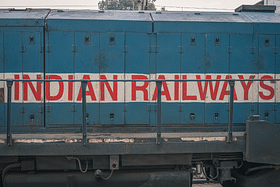A massive push for infrastructure development in the rail and road sectors is likely to be the focus of the coming budget on 1 February, with record allocations expected for both sectors.
Redevelopment of stations, 100 per cent electrification, proliferation of Vande Bharat trains, and new railway lines are some of the key areas that will get considerable funds as part of Indian Railways’ priority areas.
Besides going for big-time capital expenditure, Finance Minister Nirmala Sitharaman in her budget presentation — her fifth in a row — is slated to give a significant push to electric vehicles/alternative fuel for mass mobility.
The piped water scheme and national rural employment guarantee scheme are also likely to get the required support in the budget.
The Railways is likely to get a record plan outlay with gross budgetary support touching Rs 2 lakh crore.
The fiscal year (FY) 2024 rail budget is expected to take measures to augment resources while curbing non-essential expenditure.
Accordingly, 100 per cent electrification of the broad gauge line is expected to be completed in FY24, which could reduce the Railways’ fuel bill by almost Rs 10,000 crore.
The Railways takes up about 15 per cent of the capital expenditure in the Union budget. The broader focus of the government would be on revamping the rail network, rail electrification, station redevelopment, and Vande Bharat trains.
Also, the focus will be on increasing the share of non-fare revenue sources in the Railways’ total revenue. This could be done through increased asset monetisation, especially on the yet-to-be-operational dedicated freight corridor and also the sale and commercialisation of railway land at key destinations.
Expenditures in both the rail and road sectors have registered more than 80 per cent of total allocation.
The Railways has spent Rs 1.1 lakh crore, which is 84 per cent of the annual allocation of Rs 1.4 lakh crore; while in the road sector, Rs 1.5 lakh crore has been spent.
Railways’ capex comes from three sources: budgetary support, earnings from internal resources, and extra budgetary resources (EBR).
The budgetary support and EBR components are expected to be more than FY23 in the upcoming Union budget. But, as usual, the internal resource generation will likely remain a minuscule component of the capex amount.
Over the last few years, there has been a significant increase in the Railways capex year-on-year, from just Rs 45,980 crore annually between 2009 and 2014 to Rs 215,058 crore in FY22.
The capex for 2022-23 was pegged at Rs 245,800 crore, the highest ever. Of this, nearly 56 per cent was to come from budgetary support and 41 per cent from EBR.
In any case, the big-ticket railway projects which require enhanced capex year-on-year include massive electrification of the railway network and the production of 400 Vande Bharat trains in three years, more rolling stock investments, laying additional tracks, and so on.
As part of the electrification push, the target is 100 per cent electrification by December 2023, upgrading Delhi-Mumbai and Delhi-Kolkata corridors to 160 km/h.


